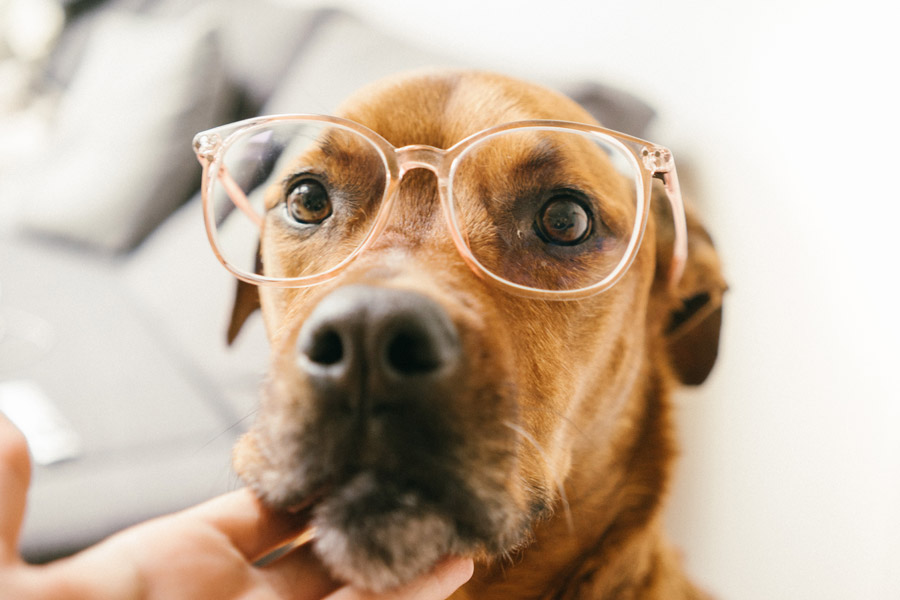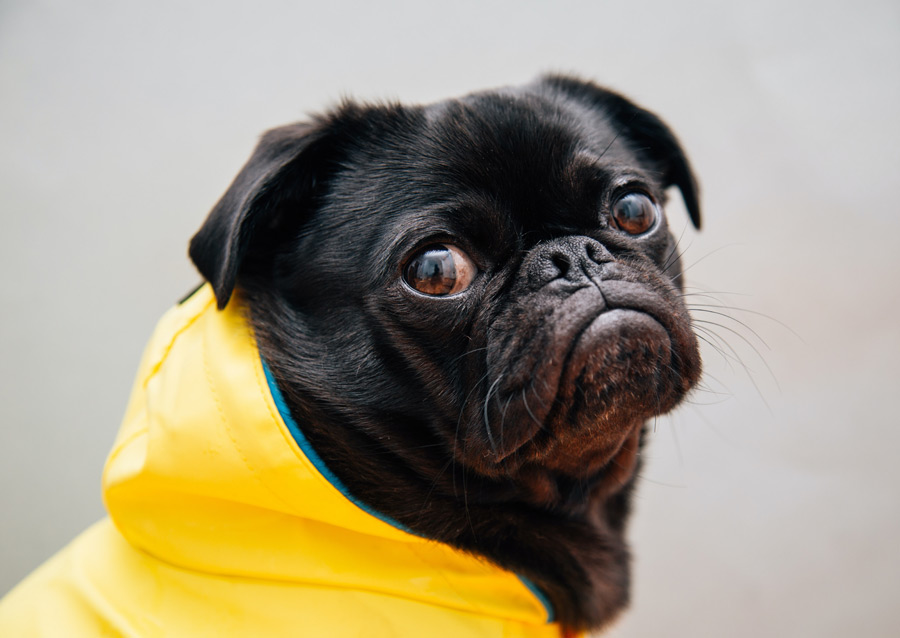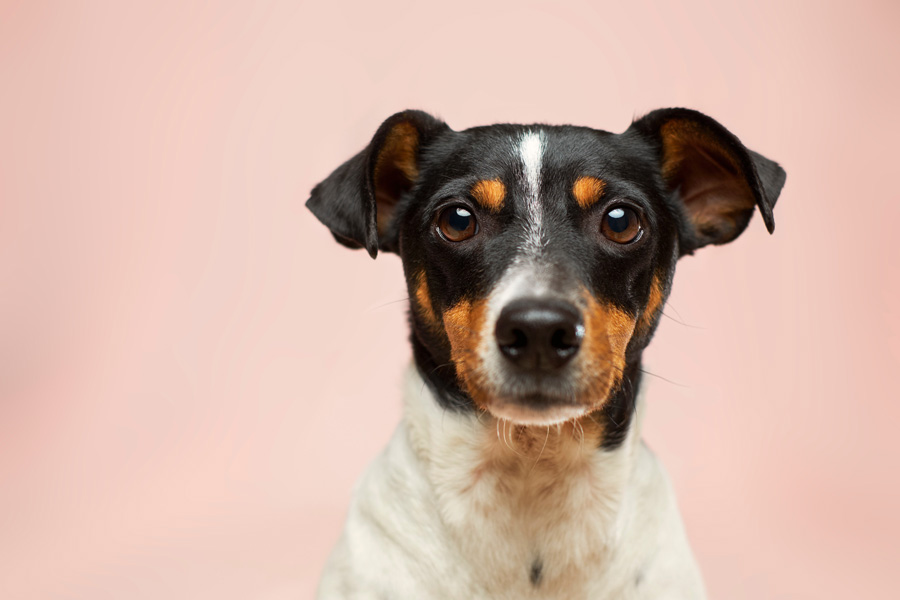As a pet parent, your dog’s eye health might not be top of mind. After all, there are vet checks, vaccinations and preventative treatments to deal with.
However, looking after your dog’s eyes are an important part of caring for your special fur pal. Not to mention an essential part of being a responsible pet owner!
Just like us humans, there are lots of things that can irritate a dog’s eyes — from dirt and dust to more serious things like dry eye, cataracts and glaucoma.
So, the key message is — don’t take your dog’s eye health for granted. Make sure you check your dog’s eyes regularly for any changes or signs of irritation.
Managing your dog’s eye health: the warning signs
Dogs can suffer from a wide range of eye conditions; some of the more common ones include conjunctivitis, glaucoma, cataracts and dry eye.
Indeed, just like in humans, the earlier dog eye health issues are identified and treated the better. Leaving a canine eye issue untreated can cause more serious problems.
Of course, pet parents aren’t expected to be able to diagnose an eye disorder but it is helpful to recognize the signs of a dog eye health issue.
Common signs that may suggest something is not quite right include:
- frequent blinking or squinting
- redness
- tearing
- yellow or green discharge
- cloudiness
- Indication of decreased vision, such as banging into things, poor balance or confusion
- light sensitivity
Common canine eye issues
Looking after your dog’s eye health goes hand in hand with being a responsible pet owner. There are myriad things that can cause eye health issues in dogs. What’s more, eye disorders can range from minor ailments to serious, long-term problems.
Being aware of the common eye problems and knowing the most frequent signs and symptoms is vital for identifying any eye issues early on. Here we’ve detailed some of the more popular eye concerns in dogs.
Cataracts
Cataracts in dogs can be hereditary, a result of genetics, or caused by an injury. However, a common cause is diabetes. Thus, if your dog has diabetes it may be more prone to developing cataracts.
If cataracts cover less than 30% of the lens, the dog should not be visually impaired. If the cloudiness increases and covers 60% or more of the lens, vision is likely to be affected.
In some cases, cataracts can remain static. Whether or not the condition progresses depends on various factors including the type of cataract, the breed of dog, as well as other risk factors—such as the presence of disease and age of the dog.
Which breeds are most at risk?
Breeds prone to hereditary cataracts: American Cocker Spaniel, Labarador Retriever, French Poodle, Boston Terrier and the Welsh Springer Spaniel, to mention a few.
Treatment
In the case of cataracts, you will need to take your canine chum to the vet. A vet will perform an eye exam to identify the level of vision impairment. It is possible to have cataracts removed by a veterinary ophthalmologist, but the first step is to contact your local vet.
Dry eye
The technical (medical) term for dry eye in dogs is Keratoconjunctivitis sicca (KCS). No wonder people tend to stick with ‘dry eye’!
There are several causes of dry eye, but it is most commonly associated with a disorder of the immune system.
In basic terms, dry eye occurs when the tear glands become inflamed and unable to produce the normal amount of tears that the eyes need to keep them lubricated and healthy.
Certainly, dry eye can be painful for pooches and, if left untreated, the condition can worsen.
Nonetheless, just like in humans, if dry eye is spotted early it can be successfully treated . The symptoms of dry eye include:
- discharge around the eye
- red eye
- rubbing or pawing at the face and eye area
- frequent blinking (or more than usual)
- recurrent eye infections
Which breeds are most at risk?
While any breed of dog can develop dry eye, the breeds more likely to develop the condition include: Cavalier King Charles Spaniel, Cocker Spaniel, English Bull Dog, Springer Spaniel, Pug, West Highland White Terrier, Yorkshire Terrier and Shih Tzu.
Treatment
If you suspect your furry friend has dry eye, contact your local vet for a diagnosis.
Treatment typically involves applying medicated drops twice daily to help stimulate tear production. Tear film replacement or false tears can be used alongside medicated eye drops to help keep the eyes moist and healthy.
Pet owners can assist by gently cleaning the dog’s eyes. Simply use cotton wool or a soft, clean face cloth and warm water. This can also help stimulate tear film production and get rid of sticky or dried discharge around the eye area.
Note: dry eye can make dogs more prone to eye infections so keep a look out for this. If your dog develops an eye infection it will need antibiotic eye drops from the vet.
Glaucoma
Glaucoma occurs when there is a build-up of pressure inside the eye that eventually damages the eye structure (the optic nerve and retina).
It can be inherited (primary glaucoma) or caused by another underlying condition (secondary glaucoma), such as cataracts or retinal detachment.
The symptoms of glaucoma to look out for include:
- squinting and blinking
- change in pupils – they become overly large or overly small, and unresponsive to light changes
- redness
- abnormal appearance of the pupil
- sticky discharge, making the eyes hard to open
Which breeds are most at risk?
Dog breeds prone to glaucoma: Beagle, Basset Hound, Boston Terrier, Cocker Spaniel, Shar-Pei, Siberian Husky, Pug, Labrador Retriever, and Toy Poodle.
Treatment
It’s important to take your dog to the vet for examination if you suspect glaucoma.
The treatment will differ, depending on whether it is primary or secondary glaucoma. Typically though, medication will need to be administered to help reduce the pressure inside the eye. If medication fails, it may be necessary to have laser therapy or the lens surgically removed.
Conjunctivitis/eye infection
Conjunctivitis is a condition where the pink tissue under the eyelid becomes infected and inflamed. It can be caused by a viral or bacterial infection.
While the most common form found in dogs is non-infectious, it pays to be careful. If you have more than one dog, it’s probably best to keep them separated until the conjunctivitis clears up.
Signs to watch out for include:
- blinking/squinting or partial closing of the eyes
- red or puffy eyes
- discharge
- swollen eyelid
- pawing and rubbing of eyes
Which breeds are most at risk?
Sheepdogs, Poodles and Maltese dogs, amongst other breeds that have long hair around their faces, are more predisposed to eye infections and irritations.
Treatment
As with any eye-related issue, it’s best to have it checked by a vet. While non-infectious conjunctivitis is not highly serious, it can cause your furry friend discomfort. Plus, it won’t clear up without treatment.
Depending on the underlying cause, you might need to administer an anti-inflammatory eye treatment or antibiotic ointment. You can also gently wash the eye to soothe it and remove the build-up of discharge.
Information sources:
- Vet West
- The People’s Dispensary for Sick Animals (PDSA)
- American Kennel Club: Canine Health Foundation
Image source: Unsplash.com









Leave A Comment